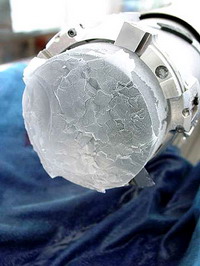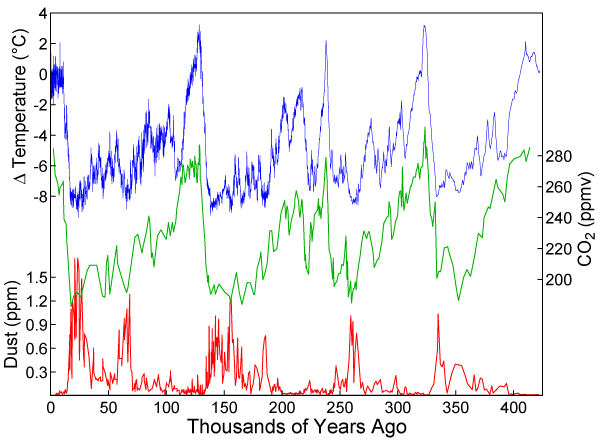
Studying Ice Cores
The ice cap present in Antarctica has an average thickness of approximately 2000 metres, and an being laid down as snow and compressed over hundreds of thousands of years. The layer of snow at the surface is porous and contains bubbles of air, with the makeup of the atmosphere at the time of deposition. The air above Antarctica is free from local pollutants and contains a true representation of the makeup of the atmosphere.
Deep within the ice there are bubbles of air present that have been isolated since the ice was compressed. The ice is extracted by drilling into the ice cap and removing cores of ice. The resulting core of ice, consisting of many sections totalling several hundred meters in length, represents a timeline containing samples of the atmosphere at the time the snow was laid down. The cores are preserved by keeping them frozen before analysing the contents.
A typical ice core after extraction.

Taken from: hcgtv.com/tech/
The concentrations of the gases in the bubbles are analysed by grinding the ice at very low temperatures and condensing the gases released. The concentration of CO2 present gives a measure of the extent of global warming. Dust in the ice can be linked to periods of cold dry weather with an increase in desert areas and wind speed.
The figure below shows the trend over thousands of years of CO2, temperature and parts per million of dust obtained by the study of ice cores from Antarctica. An increase in the level of CO2 is linked to an increase in the temperature while during periods of lower temperature, dust levels are higher.

Taken from: www.wikipedia.org
